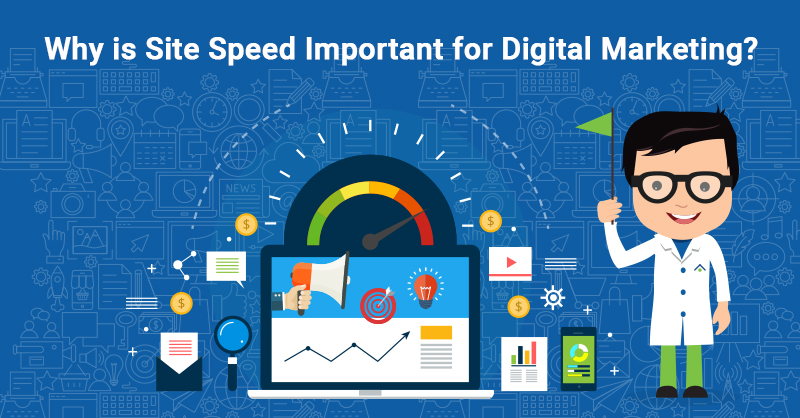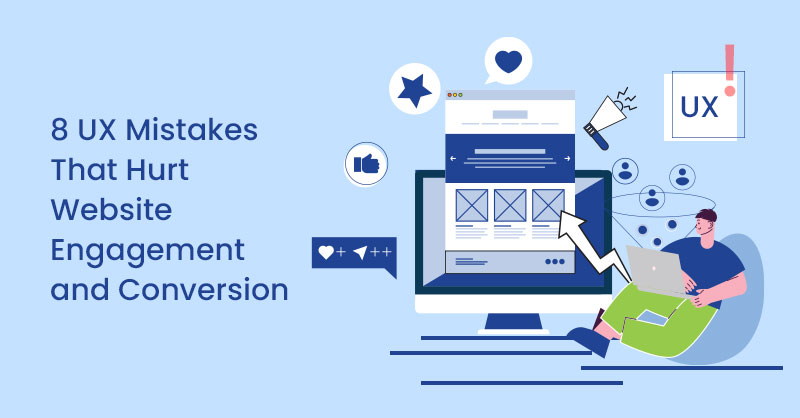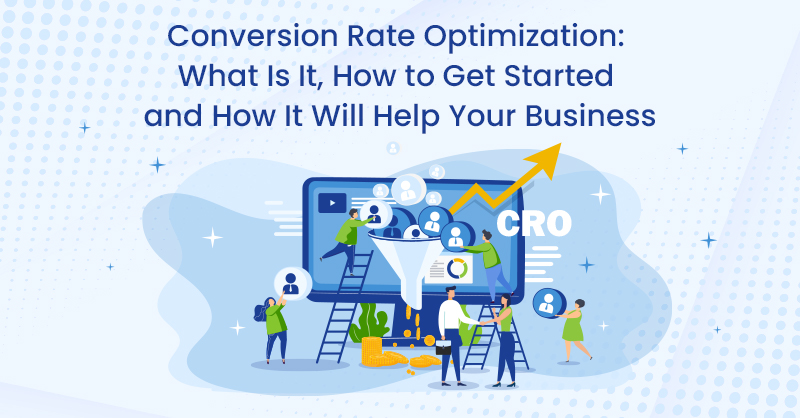What is Site Speed?
To explain why site speed is important for marketing, we first need you to understand what site speed is: Site speed is simply defined as how quickly users can see and interact with the content served by your website.
Google’s Mobile-First Index
In 2018, Google reversed its search directions by switching to the mobile-first index. This means that from now on, it uses the mobile version of the content for indexing and ranking. Users now expect the mobile version of a site to load as fast, if not faster, than the desktop version. That makes mobile SEO crucial if you want to be sure that you’re visible to your audience anywhere and anytime.
It’s 2019, fast site speed is crucial! It is an essential component of your overall digital strategy and online presence. To be more precise, your website speed has a major impact on SEO rankings on desktop and mobile, along with paid ads on Google, impacting quality score, and, most importantly, overall (UX) user experience and conversion.
We will now do a breakdown of how site speed impacts multiple digital channels.
Site Speed and SEO Ranking
Site speed is a ranking factor and an even larger ranking factor for mobile pages, due to Google’s above mentioned mobile-first index. With that being said, we have already seen the direct impact that site speed has on client website SEO rankings and organic traffic.
We see 3 to 4 seconds or less as a reasonable page load time. This varies slightly depending on the type of site and industry, but typically you're doing well if your web pages load in less than three to four seconds. Once you exceed that 3 to 4 second load time, we start to see less optimal rankings as well as a poorer user experience. In comparison, if we lowered this page speed to sub-three to four seconds, we'd most likely see better ratings.
Site Speed’s Impact on User Experience and Conversion
User experience affects SEO, paid search, and paid social, which is why site speed is so important as it plays a direct role in user experience.
Ultimately, slow websites will have a low conversion rate, high bounce rate, and a low number of page views per visit.
- Conversion rate is defined by the number of visitors to a website vs how many of those visitors take the defined desired action, i.e. make a purchase, submit a form, click a contact number to make a call, etc.
- Bounce rate is the percentage of visitors to a particular website who navigate away from the site after viewing only one page.
- A page view is a visit to a page on your website. If the visitor reloads a page, this counts as an additional page view. If the user navigates to a different page and then returns to the original page, this will count as another page view.
A slow loading site usually causes people to get frustrated, close the browser window or cancel the page load and perform another search; this time, choosing and converting on the website that does not make them wait! Keep in mind that the bounce rate is a ranking factor for SEO, so make it a priority to reduce your bounce rate.
For a business with a long conversion funnel on the website, this is even more relevant. There is always drop-off when a conversion funnel has multiple steps and pages, but when you also have a slow website and users are trying to get through a more complex conversion funnel, that drop-off is amplified.
Page Speed Case Study
Poor page load speed is a recurring issue that we see with almost every new client.
Using a case study example, we implemented a site speed optimization strategy on a new client’s website. Days after, the client’s developer accidentally rolled back our implementation. The website rollback took the page speed from our 3 seconds optimized load time to about 10 seconds after the optimizations were removed.
We soon got a call from the concerned client who noticed an immediate and steady drop in their rankings. Not only did their page ranking drop, but their sales team reported a drastic reduction in site form submissions and calls. It took some investigation but, after we realized what happened, we re-implemented the site speed optimizations and got their website back to a 3 second load time. Form submissions increased, calls started rolling in again, and page rank shot back up!
This unfortunate scenario gave our client real-time and measurable proof that site speed is directly linked to SEO and, most importantly, to the all-important conversion rate. It doesn’t hurt that it also gave our work a credibility boost!
The benefits of site speed on user experience impact other digital channels as well, like paid search.
Site Speed and Paid Search
When strategizing PPC and site speed, it comes down to balancing the most affordable and cost-effective rate for your keyword bids. Your quality score determines this. When referring to paid media, quality score is how relevant Google finds your landing page to a search term. Google evaluates the user experience based on how that person is directed to your page from that specific keyword. Slow site speed will ultimately appear to Google as a poor user experience and will, in causality, reduce your quality score.
The quality score determines your CPC (cost per click) and where you show up on the SERP (search engine results page). A low site speed or quality score makes it hard to rank in the top two positions on the SERP and depending on how competitive the keywords are; you may not even show up in any of the top spots. With a low enough quality score, your ads won’t show up at all. So there you have it, quality score impacts on PPC in a big way.
Site Speed and Social Media Ads
A lot like paid ads on Google, Facebook is also in favour of higher site speed when prioritizing advertisements. Facebook tries to display the best results to suit your interests.
In August 2017, Facebook had an algorithmic change that prioritized user experience, factoring in site speed. As discussed, faster site speed equals better user experience. Facebook announced that your ads would now either be prioritized, or not, based on speed and user experience. Many factors that come into play for Facebook’s algorithm with social ads, but a fast load time will give your ad a higher priority on the newsfeed, while slow load times will cause your ad to be demoted or even ignored.
Now You Know… What’s Next?
Now that you know how vital fast site speed is to your website and overall business, from affecting digital channels, to effectively determining your bottom line (conversions), here is a comprehensive guide that will show you how to benchmark and improve your site speed.
Benchmark Your Site Speed
The first step in this process is to get the baseline of your website’s speed and current performance. There are a number of tools that run benchmark analysis, which shows how your site compares to its competitors. These tools are free, so you can run as many reports as you need. Google’s site speed tool, PageSpeed Insights, is our primary go-to. If you want more reliable options, GTMetrix and Pingdom are a solid choice. It is a simple process that involves running an automated analysis of your website’s URL. You will then get a comprehensive report that breaks down various site speed insights and the corresponding recommendations for improvement.
Use this report as your baseline before making any optimizations and then once you have made updates rerun the analysis to track your progress. Some basic updates (the low hanging fruit) include; reducing media size (images and video), disabling inactive plugins and streamlining site code.
Now that you have run your benchmark tools, identified areas of improvement and implemented some site speed best practices, you should consider working on the more subtle influencers.
Time to Evaluate the Overall Website User Experience
In addition to optimizing your site speed, remember to look at some other complementary user experience metrics.
First, ask yourself these questions:
- Did the navigation start successfully?
- Has the server responded?
- Has enough content rendered that users can engage with?
- Can users interact with the page, or is it still busy loading?
- Are the interactions smooth, natural, and free of lag?
These questions give you a better sense from the end-user perspective on how your site stacks up and what improvements you can make. It takes a combination of site speed and design elements for your website to excel and drive traffic and conversions.
Ways to Improve Your Site Speed
You have heard the saying “Less is more”, well the same rings true when trying to improve site speed. Minimize or remove unnecessary elements that could be hampering your page load time.
Here are some recommended strategies to optimize your website for faster site speed:
- Minimize the number of redirects, plugins, and link shorteners on landing pages
- Decrease mobile rendering time by compressing files
- Streamline all script found on web pages
- Utilizing multi-region hosting can Improve server response time
- Remove javascript that prevents or slows page element rendering
- Delete redundant data which does not affect the way the page is processed
- Optimize larger images to reduce file size without diminishing visual quality
- Using asynchronous scripts can streamline render time on pages
- Use adaptive serving to display content for slower connections/devices dynamically.
In a nutshell, there is no one answer to getting positive results from your marketing campaigns. Each campaign must be customized to the individual business industry, model and goals. The cumulative effect of implementing the above strategies and techniques effectively describes why site speed is crucially important to your marketing campaigns.






on
This is informative. Having a fast site speed gives customers a good experience on your site.
Thanks
on
My blogs average load time is varies between 1.0 and 2.5 seconds, what speed is enough?